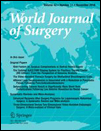Xiphoidectomy for Intractable Xiphodynia
Abstract
Background
Xiphodynia is a rare condition with hardly any data published regarding xiphoidectomy as a valid treatment option for intractable disease. It is necessary to bear this syndrome in mind after having filtered out other differential diagnoses.
Methods
Between 2003 and 2015, 11 patients underwent xiphoidectomy for intractable xiphodynia at our institution. Patients’ charts were reviewed including preoperative workup, operative technique, and results. Every patient had routine follow-ups, 4 weeks after the procedure and 1 year after surgery.
Results
The main symptom was chest pain in the area of the xiphoid. Conservative treatment trials with different combinations of analgesics over at least 1 year did not lead to insufficient and long-term improvement, which is why the decision for a surgical xiphoidectomy was eventually made. No postoperative complications occurred. Significant pain relief was achieved in eight out of ten patients; one patient was lost to long-term follow-up. Both patients with insufficient pain relief have had previous surgery in form of a sternotomy and upper median laparotomy.
Conclusions
Xiphodynia is a diagnostic conundrum, which is why reports on its treatment including surgical resection of the xiphoid are even sparser. So far, this is the largest reported series of surgically treated xiphodynia. Correct diagnosis remains the key factor for success. While tenderness over the tip of the xiphoid process combined with protrusion of the xiphoid with a xiphisternal angle of <160° are good indications for surgery, patients after previous operations affecting the xiphoid process are less likely to benefit from xiphoidectomy.




